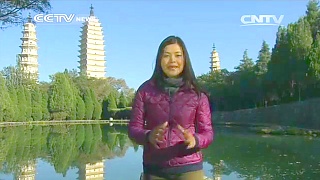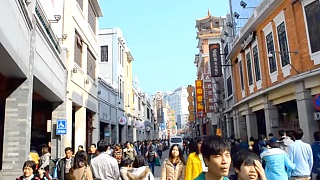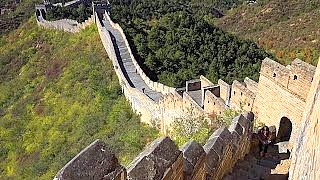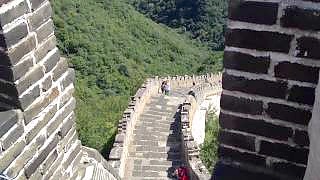
|
A fascinating, hour plus documentary by CCTV's Travelogue (from the English language CCTV9 channel).
Dali is a four and a half hours drive from KunMing, the provincial capital of YunNan in south China, or forty minutes by air. By rail it is also connected to nearby LiJiang.
We haven't posted a Travelogue for a couple of years, but are very happy to say that it is back to its best - intelligent presenter and beautiful cinematography. Highly recommended.
Inhabited predominantly by the Bai and Yi ethnic groups.
1 : Dali Old Town
1/1 In this segment, presenter Katrina Yu tours the artistic cobblestone streets of the Old Town, meeting adventurous travelers along the way -- and shows where you can party with musical locals at night.
1/2 Katrina sails across the serenely beautiful ErHai Lake, enjoying a taste of ethnic Bai culture along the way. She also gets a lesson in an ancient handcraft and peeks inside a luxurious lakeside guesthouse.
1/3 Katrina strolls through the surrounding grounds of Dali's iconic Three Pagodas, and shows audiences the breath-taking view from the top of the soaring CangShan Mountains.
2 : The outskirts of Dali
2/1 Katrina hikes the holy paths of JiZu Mountain, one of the most sacred Buddhist sites in China, and discovers the historic temples which have given the area the nickname of "scented wonderland"
2/2 Katrina visits the traditional ethnic Bai village of XinHua. Join her as she is treated to a colorful 'Eight bowl' Bai banquet and gets a lesson in an age-old handicraft from a master silver maker.
2/3 Katrina wanders through the ancient town of ShaXi. Join her as she savors the sights and tastes of the bustling weekly market, and finds out how this age-old center has succeeded in becoming a modern tourist destination while maintaining its old-world charm.
3 : The 'thousand year old' village of NuoDeng, deep in rural Dali
3/1 Katrina and the crew arrive at the hillside village. They get a taste of Nuodeng's famous salted ham and meet a local man whose character is just as interesting as the temple he guards.
3/2 Katrina visits a unique family museum, and has her pulse checked at a guesthouse where the owners offer holistic health treatments as well as accommodation.
3/3 Katrina plays teacher and student for a day, getting a lesson in local culture at Nuodeng's lively primary school.
|

 FenJieZhou Island 分界洲, HaiNan province
FenJieZhou Island 分界洲, HaiNan province






